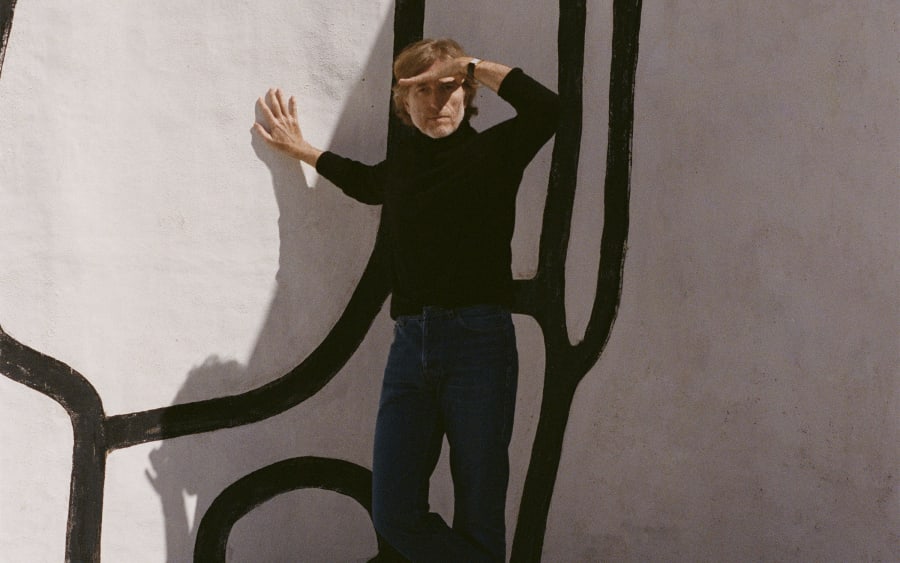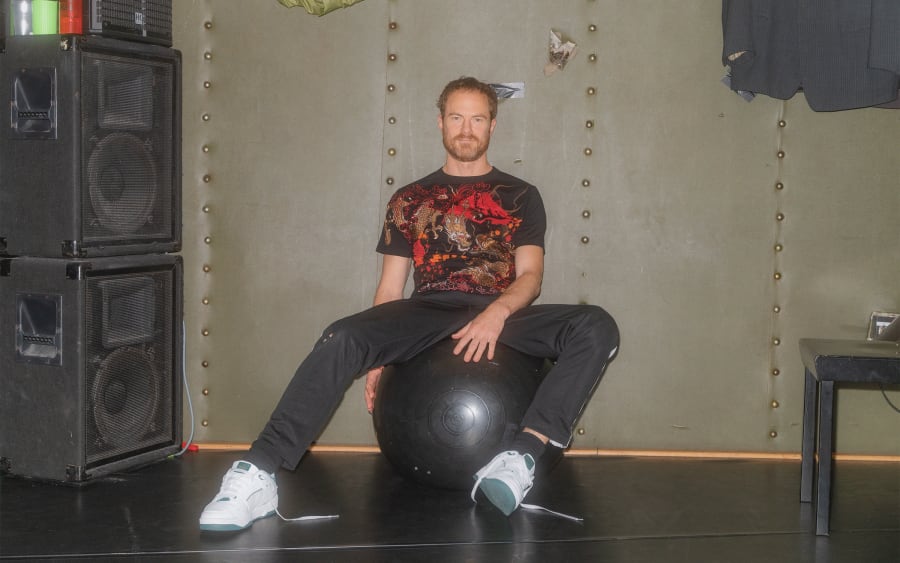When I asked Gerard & Kelly to choose a building we could visit together, they quickly settled on Tadao Ando’s Meditation Space at Unesco’s headquarters in the heart of Paris. This circular concrete pavilion stands discreetly in the shadow of the renowned building by Marcel Breuer, Bernard Zehrfuss, and Pier Luigi Nervi, adjacent to Isamu Noguchi’s Japanese garden. Upon arrival, we notice a ceremony taking place across Avenue de Lowendal, behind the gates of the École Militaire. ‘The machinery of war faces the machinery of peace,’ observes Brennan Gerard as we enter the international institution, which enjoys extraterritorial status in the heart of Paris.
Having started out in performance and dance, the American artist duo, now based in Paris, shifted to the visual arts about a decade ago, moving beyond traditional stage settings to work in specific sites. ‘Our practice becomes the site, and the non-site,’ explains Ryan Kelly. Visiting the Meditation Space takes them back to the origins of their work Panorama (2020), filmed the Bourse de Commerce’s central space. This other Ando masterwork was designed on similar architectural principles as part of the transformation of the former stock exchange into the home of the Pinault Collection. The space also evokes ‘bardo’, a concept from Tibetan Buddhism describing an unsettling, yet potentially transformative, liminal state between death and rebirth. The concept lends its name to Gerard & Kelly’s current exhibition at Marian Goodman Gallery in Paris.
When it was inaugurated in 1995, the Unesco Meditation Space was Ando’s only work in France. Since then there has been Château La Coste in Provence (2011) and the Bourse de Commerce-Pinault Collection in the capital (2021). Positioned slightly below the main building, it is accessed via a multi-level ramp that, until recently, passed over a reflecting pool covering formerly radioactive granite slabs. These stones were sourced from Hiroshima and decontaminated. ‘This interests us deeply: the purification of irradiated stones suggests the purification of a violent history,’ Gerard explains. ‘This space is exclusively dedicated to reflection and peace, yet it remains engaged with the world.’
At the Bourse de Commerce, the duo chose to respond to the panoramic frieze beneath the dome. Painted in the late 19th century, it depicts France’s international trade through caricatured, colonialist imagery typical of the era. ‘We conceived Panorama as a purification ritual, working with three individuals who embodied the margins of the society represented in the frieze. We imagined that their stories could form a counter-frieze – a narrative not determined by violence,’ adds Kelly.
Upon entering the Meditation Space – and several times during our visit – silence falls, as if inviting us to listen to the air around us. ‘The most successful buildings function like bodies; they breathe,’ says Kelly. ‘Art cannot save the world, but it can save our souls, inviting us to slow down time in the face of the information overload that we lack the capacity to process,’ ‘We are interested in this function of art that transcends language. The Meditation Space does not represent our differences but rather makes us lose our cultural, national, and gender identities...It is profoundly Zen, and full of promise.’
In this intimate setting, even though it is open to the wind through two large apertures, sounds circle the perimeter of the walls. Standing at the center, one’s entire body resonates. The architecture passes through us as much as we pass through it. This leads our conversation to Gerard & Kelly’s recent film, E for Eileen (2023): ‘Those in our Queer pantheon – designer Eileen Gray, composer Julius Eastman, and Saint Francis – convey the idea that the body can dissolve into the space around us,’ Kelly explains. ‘This connects to bardo, to the presence of departed beings. We are interested in subjectivities that transform through contact with others, outside our bodies, in these threshold experiences. Also in where bodies go when they merge with space. Meditating, praying, dancing, making love, and writing are all opportunities to dissolve our egos, our identities, and plunge into an abyss of oneness – to let go.’
Beyond the silence, and despite the four chairs installed there, Ando’s Meditation Space summons countless historical ghosts within and around its walls. As Gerard notes, ‘We might be the only living beings in this room, but there are also all those present whom we do not always hear. The question is whether we listen to them or not. With the return of nationalism and war, we are in an era of nostalgia, but our approach is not nostalgic. We find our strength in looking at the past, and we engage against violence from within. Art has a responsibility toward history.’
Gerard & Kelly
‘Bardo’
From January 17 until March 8, 2025
Marian Goodman, Paris
Anaël Pigeat is a Paris-based art critic, editor-at-large at The Art Newspaper, contributor to Paris Match, and independent curator.
English translation: Art Basel.
Caption for header image: Gerard & Kelly in Tadao Ando’s Meditation Space (1995), Unesco headquarters, Paris, 2024. Photograph by Aude Carleton for Art Basel.
On all portraits of Gerard & Kelly by Aude Carleton: Clothes by Études Studio, styled by Stacey Berman.
Published on January 16, 2025.


